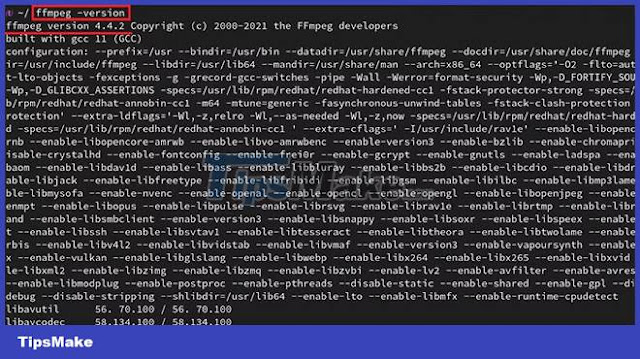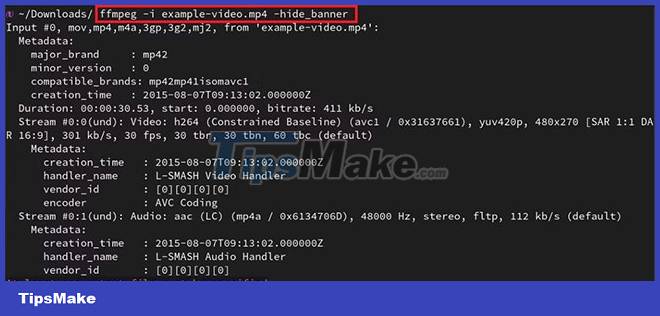Step by step instructions to utilize the FFmpeg order to deal with sound and video on Linux
FFmpeg is a free and open source program that can change over any video configuration to another video organization and change its codec.
Nearly anybody associated with video has likely known about FFmpeg previously. For those new, FFmpeg is a free and open source program that can change over any video configuration to another and change its codec.
FFmpeg upholds practically all sound/video codecs (H.264, H.265, VP8, VP9, AAC, OPUS, and so on), document designs (MP4, FLV, MKV, TS, WEBM, MP3, and so forth) and, surprisingly, streaming conventions (HTTP, RTMP, RTSP, HLS, and so on.).
This is the way you can introduce and utilize FFmpeg to deal with sound and video records on Linux.
Introduce FFmpeg on Linux
FFmpeg is a free and open source device accessible in the default vaults of pretty much every significant Linux circulation. You can likewise get the source code free of charge if you have any desire to order it yourself.
Get video data with FFmpeg
The data of the video you need to alter with FFmpeg can be seen utilizing the - I banner :
ffmpeg - I model video.mp4 - hide_banner
Here, the occupation of the - hide_banner boundary is to conceal pointless data. You can eliminate this boundary and see the distinction in the result.
As may be obvious, it is feasible to get a great deal of data, for example, the video codec type, creation date, metadata and encoder construction of the example video.
Convert video or sound documents to another configuration
One of the most valuable elements of FFmpeg is that it can switch video or sound over completely to another arrangement. You can do this with a straightforward order.
Convert MOV to MP4 with FFmpeg
You can switch MOV over completely to MP4 video documents utilizing FFmpeg with the order beneath:
To start with, utilize the - I boundary , which represents input video. Then, import the record you need to change over. At last, enter the arrangement you need to switch over completely to. You can give your result any name you need.
While FFmpeg is running, the order will show you the progressions it made on the order screen. Your result document will be put away in the ongoing working registry.
Convert WAV to MP3 with FFmpeg
Like video, you can do similar changes for sound records. For instance, you can switch WAV over completely to MP3 sound records as follows:
This order has a larger number of boundaries than the video transformation technique, yet they are quite easy to comprehend. These can be made sense of as follows:
-vn : Sometimes the sound documents you hear have pictures. These pictures are frequently gotten from recordings. On the off chance that you don't need such pictures in the result, you can utilize this boundary.
-ar : This boundary permits you to set the recurrence of the sound document you need to change over. You can change the sound quality and recurrence with values like 8kHz, 44.1kHz or 48kHz.
-ac : You might have heard the terms mono and sound system previously. This boundary can assist you with setting the quantity of sound channels.
-b:a : This boundary permits you to set the sound bitrate each second. The higher the kilobit, the higher the sound quality.
Sound activity with FFmpeg
FFmpeg can likewise isolate sound from video. For this, simply utilize the - vn boundary :
To isolate sound from video, presently you can attempt to eliminate sound from video. The distinction here is the - a boundary . You ought to remember this boundary to quiet any sound in the video:
Taking care of video sizes with FFmpeg
Video size can once in a while be very irritating, particularly when you need to transfer them some place. You don't have to download projects to manage them any longer on the grounds that FFmpeg can do this for you. Notwithstanding, there are a few boundaries you want to be familiar with this:
-ss : Use this boundary to set the beginning season of the clasp
-to : Allows you to indicate the end season of the clasp
-c : Set the codec for your clasp utilizing this boundary
-t : Use this boundary to set the span of the clasp
You can get numerous models utilizing these boundaries. For instance, if you needed to manage the video, you could utilize something like:
It is likewise conceivable to edit just the picture inside the video, yet not the whole video. For this you can utilize something like:
Here are the boundaries utilized in the previously mentioned order:
-filter:v : This boundary determines the channel you will apply to the video
crop : This boundary to determine that a yield activity ought to be performed
w:h:x:y : As you would have speculated, the factors w, h, x and y address the width, level and position of the harvest box individually
Alter Videos on Linux with FFmpeg
Video altering isn't just about cutting. Once in a while you likewise need to change the perspective proportion of the video. The accompanying order will resize the video to the size you need:
-vf : This boundary works like the - filter:v contention seen previously
scale : You can determine the scale sizes you need in your result utilizing this boundary
FFmpeg additionally permits you to consolidate numerous recordings. Envision you have numerous clasps encoded with the equivalent codec. Import the video show you need to converge into a .txt document. Then, at that point, run the accompanying order:
The concat boundary here joins your documents. It is likewise conceivable to turn a video utilizing FFmpeg:
- transpose=0: Flip upward (default)
- transpose=1: Rotate 90 degrees clockwise
- transpose=2: Rotate 90 degrees counterclockwise
- transpose=3: Flip upward
To turn a video 180 degrees clockwise, you really want to indicate the render boundary twice:
FPS and GOP . Activity
As you probably are aware, FPS implies outlines each second. GOP (gathering of pictures) is the distance between two keyframes. FFmpeg is additionally valuable for changing a few boundaries, including FPS and GOP. Assuming you utilize the order beneath, FFmpeg will change the underlying FPS to the worth you set:
For GOP you can utilize the - g boundary and set its worth to anything you desire. Note that constraining an excessive number of keyframes can hurt the progress calculations of some encoders.
Make energized GIFs with FFmpeg
FFmpeg is likewise great for changing recordings over completely to vivified GIFs. You can utilize a basic change order to do this:
Be that as it may, now and again, you should modify the GIF. You can utilize various boundaries talked about above to accomplish this:
The - r boundary here implies the casing rate. As may be obvious, a wide range of customizations are conceivable in a solitary line order.
Remove outlines from video with FFmpeg
As well as switching at least one pictures over completely to video, you can likewise remove outlines from the video. The accompanying order will remove one casing each second from your feedback video. Moreover, these separated pictures will have two-digit names like 01.jpeg, 02.jpeg, and so forth. Whenever wanted, you can likewise add different boundaries that you have learned.
Tags
Technology


